Hello, it’s Katherine again. In my LA Pen Show Recap I promised I’d do an overview of my haul… so here it is! As I mentioned, there doesn’t seem to be a US show quite like LA for urushi hunting — so, as you can probably guess, I picked up some of that. But, I also picked up a handful of inexpensive flex nibs and a vintage Italian pen.
I’ve put the urushi pens toward the bottom of the post, but a quick warning — there is some, uh, artistic nudity (carved into a pen) further on down. If this ain’t your thing, please skip this post!
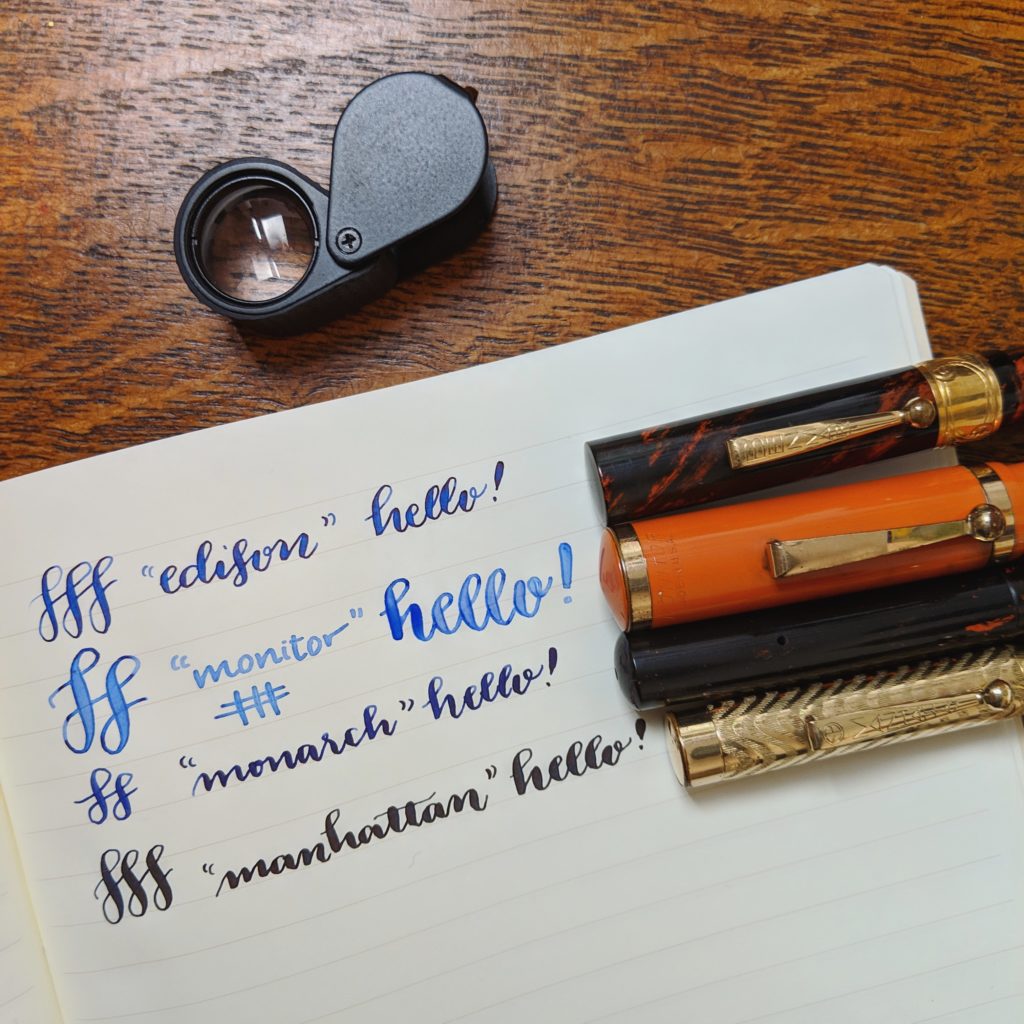
I had a lot of luck hunting for flex among dealer’s cheaper trays and even the pens for parts. The first three pens in the photo were all from the same dealer, but I did pass up quite a few other “cheap” flex pens where I wasn’t excited by the exterior. I chose to take these ones home because I thought that, in addition to fun nibs, they looked neat.
Unfortunately, they all have fairly small nibs (part of what makes them inexpensive) so none of them fit a #5 nib unit. Some may fit a Kaweco Sport, but I don’t have a spare Sport to try them with.

While we’re on the topic of fun nibs — I bought this ridiculous 1.9mm Parker 51 stub from Greg Minuskin on Saturday. Just when I thought I was done buying, I realized he had a couple of these fatties left, so one came home with me. I’ve shown it here with the already-juicy factory stub as a point of comparison.
Mine installed with no issues, but I have heard that the hood may need to be filed a bit to accommodate for the enormous tipping — so if you do get one, go slow and carefully when installing! If you tighten the hood and it pushes the tipping, you’re at risk of breaking the tipping off. Oh no!
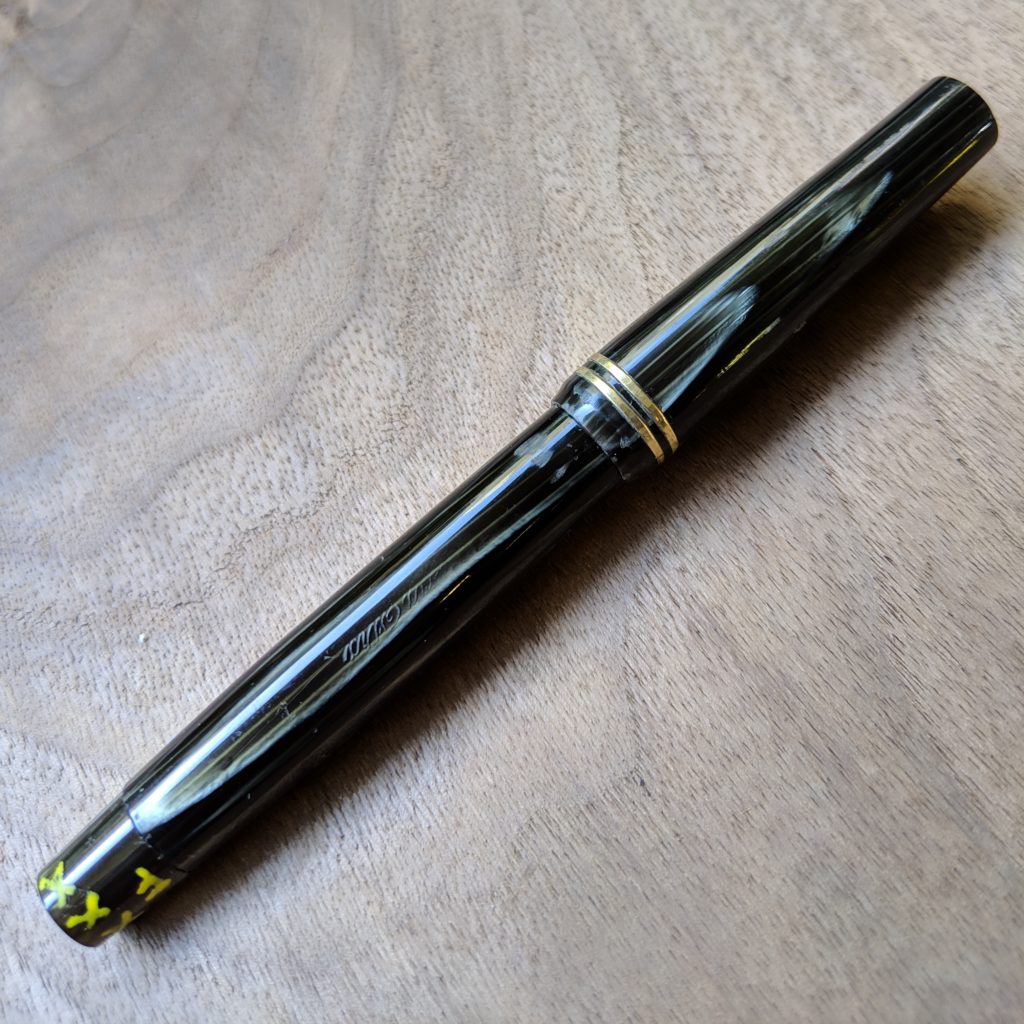
My one Italian pen for the show — an Electa in Grey (or Platinum) Arco. The pen has some cosmetic damage (see the smudge marks on the barrel right below the cap?) but I’m confident I can buff most of it out. Additionally, the pen sports a semi-flex nib. I love the nibs on vintage Italian pens!
(And ignore the yellow markings, they’ll rub off — I just haven’t gotten around to do it. I think it’s Letizia’s system for keeping track of her pens)
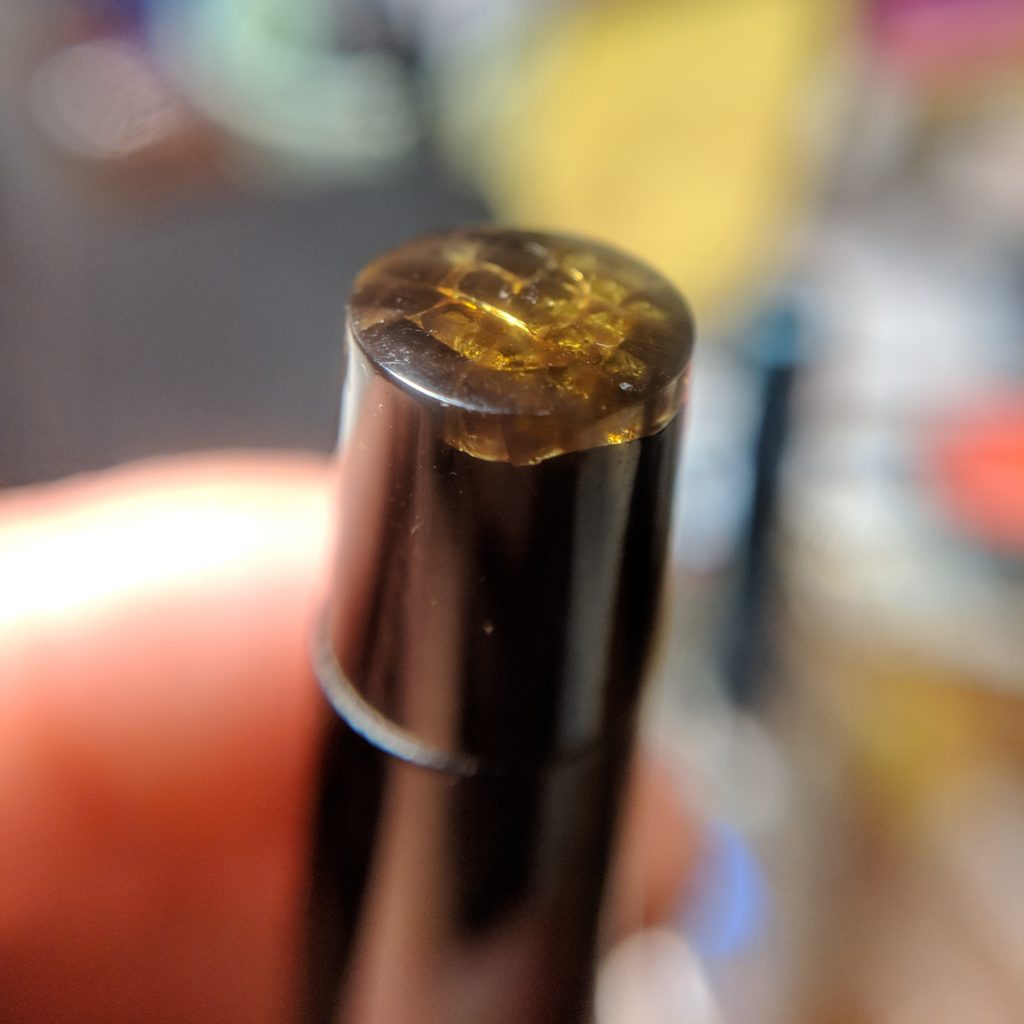
In addition to the barrel damage there is crazing on the end of the blind cap. Did you know that Arco pens could craze? I didn’t either — but now I’ve got proof. Letizia and I noticed the crazing as I was fiddling around with the pen, and she was horrified — the price went down and she included a solid black blind cap so I didn’t have to use (or keep) the damaged one. I chose to keep it, but I won’t store the pen with it.
If you’re unfamiliar with “crazing”, there’s plenty of helpful reading on the web, I found this article particularly helpful. And this one, specific to pens. The TLDR is that celluloid is unstable, and can break down over time. Some celluloids are known to do it, and for some it’s less common. It’s common with certain Wahl Dorics, and the Omas Royal Blue pens are known to do it (first they turn a gorgeous shade of purple, then pink… then disintegrate). This is the first time I’ve seen Arco craze, but apparently it’s not unheard of. Womp.
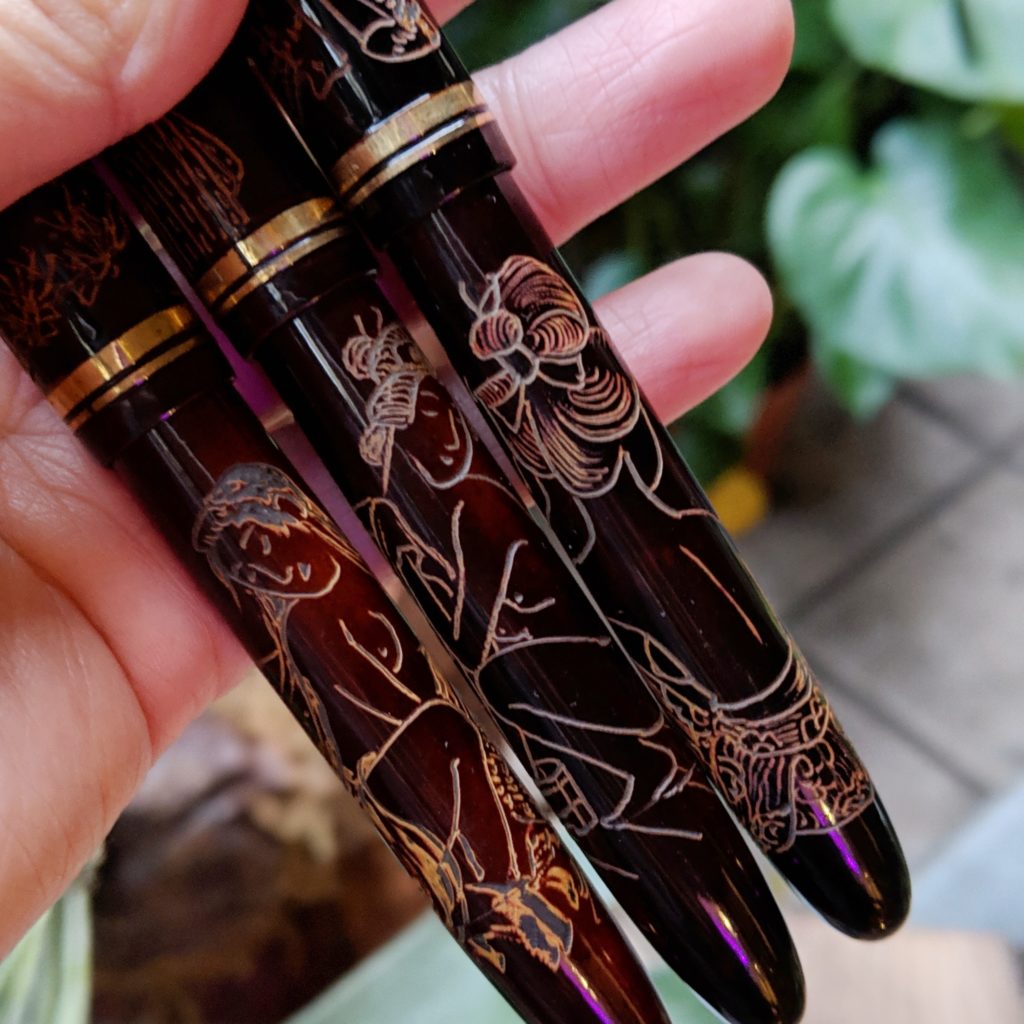
Bring on the urushi! I joked that there weren’t enough women at pen shows… so I bought some.
All three are carved urushi, with motifs of women in various stages of bathing (and nudity). I’d never seen pens like this, and another vintage dealer suggested that they were likely made after the war, as souvenirs for GIs. All three sport steel nibs and fill via a Japanese eye dropper system. They likely weren’t expensive pens based on the nibs and quality of the carving.
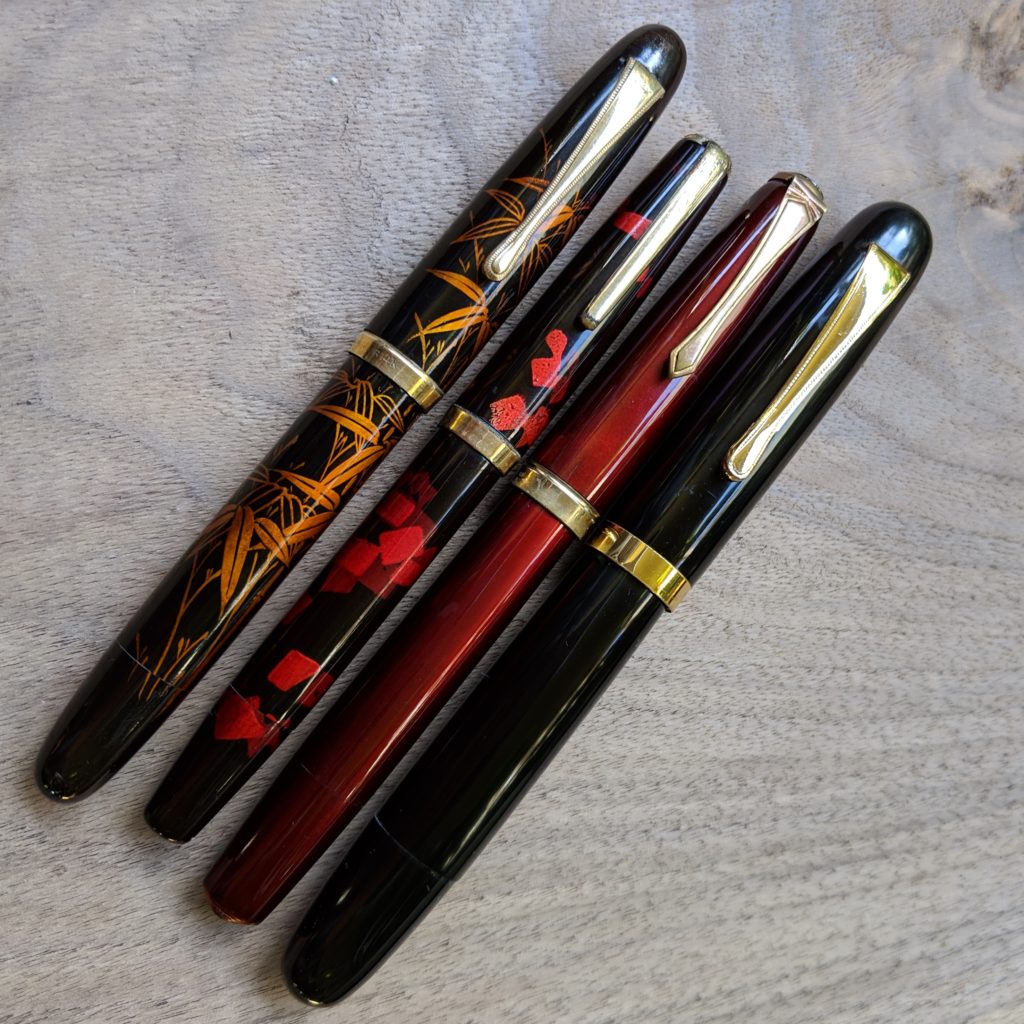
And the rest of my urushi haul. The top (left) three pens are from unknown makers — the first two involve gold and lacquer of some sort. The third may be urushi, and may not be — the dealer I bought it from, Lawrence Prenton, thinks it’s urushi, but it’s so even that I’m not 100% sure. Either way, it has a very nice red glow. The bottom/rightmost pen is likely a ban-ei pen based on the nib.
Ban-ei pens usually weren’t signed, but the nib bears the imprint that identifies it as a “GK” nib. There’s much more to read about Ban-ei & the nib maker (master?) Kabutogi Ginjiro, but that’s a rabbit hole all on it’s own. I own two other pens with nibs by him — but this is the first one I’m comfortable using daily, the other two are more elaborate kamakura-bori pens that I have a tendency to baby.
All the vintage urushi pens are Japanese eyedroppers (like most that are sold) none of them are restored except the black Ban-Ei. If you’re not familiar with Japanese eyedroppers, the mechanism is similar to the Opus 88, where there’s a seal at the back of the pen and a rod that shuts off flow when the blind cap is tightened. The big downside to these pens, as gorgeous as they are, is that very few people restore the mechanisms once the seal goes bad. To my knowledge, no US repairer takes them on — and the only restorer I know of who does it is based in Europe and doesn’t take pens from the US because of customs dues. That said, some people do the repair themselves at home (such was the case with the Ban-Ei), but if buying a pen that’s restorable is key for you — these likely don’t fit the bill.
And, that’s it folks! Did you find what you were looking for at the LA Pen Show?
1 Comment
I am so jealous… everything you bought is amazing!